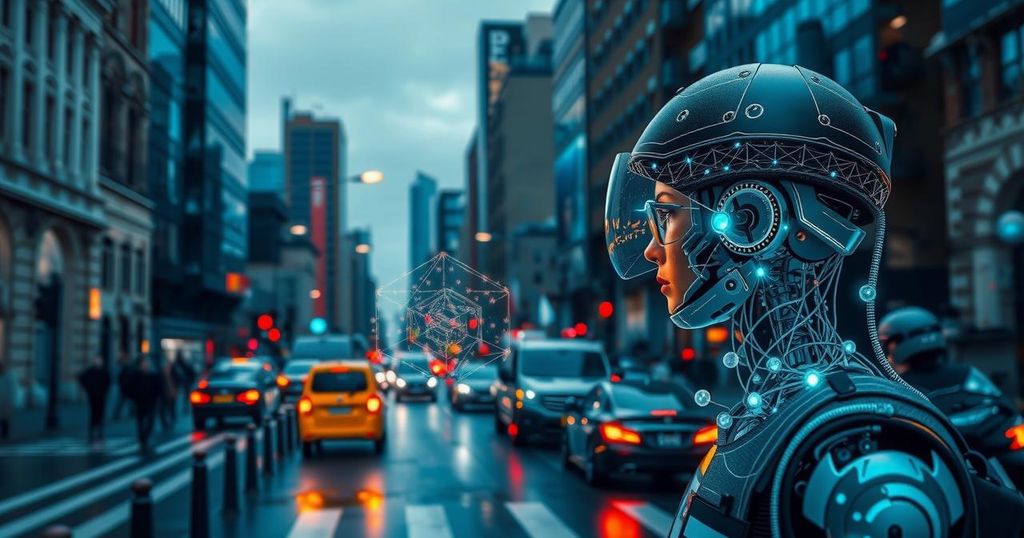In earthquake-prone Japan, researchers have developed a machine learning model to predict soil stability, enhancing urban resilience against liquefaction. Utilizing geological data from Setagaya, Tokyo, the model generates accurate 3D maps that assist city planners in identifying stable construction sites. This study underscores the significance of AI in urban development and disaster preparedness.
Advancements in artificial intelligence are paving the way for the development of safer urban environments, particularly in earthquake-prone areas like Japan. Researchers, led by Professor Shinya Inazumi and his student Yuxin Cong from the Shibaura Institute of Technology, have engineered a machine learning model that generates accurate three-dimensional maps of soil stability, enhancing urban resilience against the risks posed by liquefaction during seismic events. This innovative model utilizes geological data from 433 locations in Setagaya, Tokyo, to assist city planners in identifying viable construction sites and improving disaster preparedness strategies. In regions susceptible to earthquakes, assessing soil stability is paramount for safeguarding infrastructure. Liquefaction, a process whereby saturated soils lose strength under seismic pressure, poses significant risks to buildings and infrastructure. Historical incidents in Japan, such as the 2011 Tōhoku earthquake, have illustrated the severe impacts of this phenomenon, causing substantial damage to homes and fundamental services. To counter such risks, the application of artificial neural networks (ANNs) and ensemble learning techniques helps generate detailed contour maps that indicate the depth of bearing layers in the soil, which are critical for constructing stable structures. In their latest publication in Smart Cities dated October 8, 2024, Professor Inazumi and Mr. Cong showcased their study, which outlines the process of predicting soil reaction and stability during earthquakes. By creating precise 3D maps that delineate stable and vulnerable areas, the model offers a broader understanding of soil behavior compared to traditional manual testing methods. Notably, the researchers reported a 20% enhancement in prediction accuracy through the implementation of bagging techniques, which allow the model to train on multiple data subsets. The ultimate aim of this research is to support the development of smarter cities, optimizing urban planning and risk mitigation focused on liquefaction threats. The researchers anticipate that their findings will contribute significantly to urban resilience initiatives. “This study provides a foundation for safer, more efficient, and cost-effective urban development. By integrating advanced AI models into geotechnical analysis, smart cities can better mitigate liquefaction risks and strengthen overall urban resilience,” stated Professor Inazumi, enthusiastically emphasizing the potential of this impactful research. In conclusion, through the integration of machine learning with geotechnical engineering, this project exemplifies the vital role of technology in enhancing urban safety and resilience. The systematic identification of stable soil areas facilitates informed infrastructure decisions, fundamentally contributing to the future development of safer urban centers.
Soil liquefaction remains a critical concern for urban planners and disaster management authorities, particularly in earthquake-prone regions where intense seismic activity threatens structural integrity. Japan has been notably affected by liquefaction incidents, most infamously during the Tōhoku earthquake and subsequent seismic events. This has propelled the need for innovative solutions that accurately predict and map soil behavior during such events. Leveraging machine learning allows researchers to analyze vast amounts of geological data efficiently, offering city planners practical tools to enhance disaster preparedness and ensure urban resilience.
The research conducted by Professor Shinya Inazumi and Yuxin Cong demonstrates a promising advance in the application of artificial intelligence for urban resilience, particularly against the backdrop of liquefaction risks in earthquake-prone regions like Japan. By generating precise models of soil stability with machine learning techniques, the study establishes a crucial step towards improving infrastructure reliability and safety. This combination of advanced technology and geotechnical insight is essential for fostering smarter, safer urban environments in the face of natural disasters.
Original Source: www.preventionweb.net






